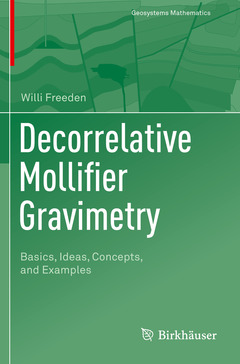Description
Decorrelative Mollifier Gravimetry, 1st ed. 2021
Basics, Ideas, Concepts, and Examples
Geosystems Mathematics Series
Author: Freeden Willi
Language: English
Subject for Decorrelative Mollifier Gravimetry:
Publication date: 05-2022
482 p. · 15.5x23.5 cm · Paperback
Publication date: 05-2021
Support: Print on demand
Description
/li>Contents
/li>Comment
/li>
Provides new insight into the current state of multi-scale gravimetric research and its applications in geoexploration
Demonstrates how reducing gravimetry to mathematically accessible decorrelated models can make unresolved questions and problems of gravimetry accessible to a broad scientific audience
Highlights the interconnection of several different geo-disciplines
Incorporates data and numerical results from methodological tests in the German Saarland area




